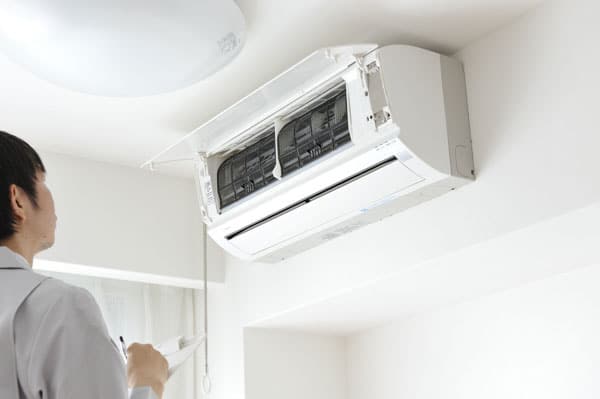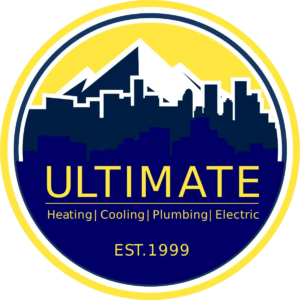Are you trying to figure out how to get heating or cooling to a particular part of your house? If that area isn’t connected to your existing HVAC system, installing new ductwork can be a hassle or even impossible to physically. That’s where ductless heating and cooling comes into play.
Read below to learn about ductless HVAC, its benefits, and what homes are well-suited for it.
What Is Ductless HVAC?
Just like the name suggests, ductless HVAC doesn’t use ductwork, neither indoors nor outdoors. There are two main components: an indoor air handling unit and an outdoor compressor. Running between them is a conduit that contains a refrigerant pipe made of copper, a drain line, and electrical wiring for power and communication between the two units.
How Does Ductless HVAC Work?
The transfer of thermal energy between the refrigerant and the surrounding air is what makes ductless HVAC work. However, converting that thermal energy into your desired indoor temperature requires five steps. Here’s how it works in cooling mode:
• The indoor air handling unit sucks in the room’s warm air using a fan.
• Warm air is blown through the unit’s heat exchange coil, which contains liquid refrigerant.
• Refrigerant absorbs thermal energy from the surrounding air, warms up, and then becomes a gas.
• Thermal energy is drawn out of the room, inside the gassy refrigerant, to the outdoor compressor.
• Hot, gassy refrigerant is cooled down by the outdoor unit, which releases the thermal energy into the air. This causes the refrigerant to condense and turn back into a liquid, which is then pumped back indoors to repeat the cycle.
In heating mode, the above process runs in reverse.
Ductless Heating and Cooling Benefits
Some advantages of a ductless HVAC system compared to a ducted central air setup are:
Easier installation. For a professional, it usually takes less than a day to install the outdoor compressor, one indoor unit, and all the pipes and cables. It’s not disruptive either, as the only major thing that needs drilling indoors is a three-inch hole for the conduit. There’s no need to tear up any drywall or ceiling.
Greater efficiency. Thermal energy loss is reduced using a ductless heating system, as there’s no chance for duct leaks and the energy is focused on the area of your choosing. During peak cooling, ductless HVAC systems runs at about 2,000 watts per hour, whereas ducted versions run at 3,000 to 3,500 watts per hour. Assuming an electricity cost of 12¢/kWh, this means running a ductless setup for eight hours per day costs $58 per month and a ducted one is at least 50% more expensive.
Easier maintenance. A ductless HVAC system means you don’t have to spend any time looking for and repairing leaks. The only regular maintenance required is removing dust from your filters every six to eight weeks (or replacing them if they’re worn out).
More control. Ductless heating and cooling allows you to control the temperature in specific areas of your home. You also have the option to use a smart thermostat to control several indoor units and to set the temperature for individual rooms. Smart thermostats make personalized heating schedules possible and reduce your heating costs by choosing exactly what time to run your heating. Learn more about their advantages via our introduction to smart thermostat installation.
Better air quality. Without ducts, there’s nowhere for mold or dust to accumulate easily. Compared to a forced air system, ductless HVAC systems use higher quality filters that absorb dust, mildew, pollen, odors, and germs.
Best Homes for Ductless HVAC
Ductless HVAC systems are perfect for homes that don’t have space for ductwork, such as an attic, small rooms, or houses with limited wall space. There are also situations where installing ducted HVAC is inconvenient or unsightly, like in a detached garage or sunroom. Additionally, when you compare ductless HVAC to window-mounted air conditioners, ductless HVAC systems are a more permanent option. This is because they’re cheaper to run, quieter, don’t obstruct your view, and don’t undermine home security. No more installing and removing ac units each summer!
Single-Zone Ductless HVAC
With ductless HVAC systems, you have the choice of single-zone or multi-zone versions. For a single-zone system, each indoor unit requires its own outdoor compressor. They’re often used to improve heating and cooling in hard-to-reach areas of a property, such as a basement or garage (learn more about heating a garage with a ductless mini split). Because they’re quick and easy to install, single-zones are frequently used in remodeled areas of the home, where it’s sometimes difficult or expensive to reconnect the existing ductwork.
Multi-Zone Ductless HVAC
As the name suggests, multi-zone systems have more than one indoor unit. They run with a single outdoor compressor and can typically handle four to eight indoor units depending on the model.
Multi-zone ductless HVAC systems are ideal for homes with temperatures that vary greatly between rooms, such as a south-facing sunroom and a north-facing garage. They’re also well-suited for homes with multiple inhabitants, as you can adjust the temperature of each indoor unit to make individual rooms comfortable depending on the person. This keeps everyone happy, reduces disagreements, and saves energy. It’s time to stop wasting energy on heating and cooling empty rooms and focus on where it makes an impact instead.
If you’re interested in installing a single-zone or whole house ductless HVAC system in the Denver metro area, get in touch with our team!


